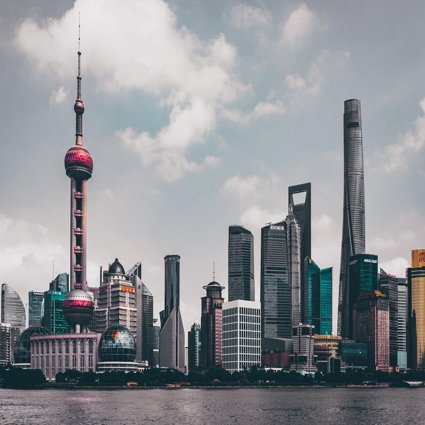
Bought by China
Students explore changes in China's consumer and national purchasing patterns
Key questions
How many potential consumers?
What is the impact of rising standard of living on consumer purchases?
Why is China travelling the world to buy raw materials?
China is recognized as the largest potential market in the world. It has 320 million young people between the ages of 16 and 30 and with rising incomes and growing urbanization there is a consumer boom in China. They have an estimated spending power of US$135 billion. As people become wealthier there is an increasing demand for cars as well as a need for more efficient forms of transport and transport infrastructure. China has built enough roads since 1990 to loop 16 times round the equator (640,000 km). It is now estimated that 10% of China's population is ‘middle class' i.e. 100 million people. This attracts the attention of Western firms such as Coke and Pepsi, Motorola, Volkswagen and Chrysler. China's population is so vast that even if only 1% of people can afford a car that still represents a potential market of 13 million people.
With rising income there is a demand for better food, housing clothing, education and medical care. Housing and healthcare are expected to be among the fastest growing areas of spending among urban Chinese. Private home ownership has only recently begun while a rapidly ageing population will fuel healthcare spending.
Once the largest oil exporter in Asia, China became a net importer of oil in 1993. By 2045, China is projected to depend on imported oil for 45 percent of its energy needs. After 9/11 China is actively trying to diversify its supply lines away from Middle Eastern crude and has adopted an aid-for-oil strategy that has resulted in increasing supplies of oil from African countries including Sudan, Chad, Nigeria, Angola, Algeria, Gabon, Equatorial Guinea, and the Republic of Congo. China takes 64 percent of Sudan's oil exports Sino-African trade grew by 700 percent during the 1990s.
Links
-
BBC video one and BBC video two - Massive increase in demand for mobile phones in China
-
BBC video three and BBC video four - Growing demand for luxury cars in China
-
BBC video five - Shanghai - city growth and changes in standard of living
Please note, we are aware that these videos are no longer available on the BBC website. Articles that you could use instead are:
Starter
Look at the China population data.
How big is China's population?
How does this compare to other countries?
Use the population pyramid to work out how many potential customers there are in each age group.
What kind of things are each age group interested in buying, do you think?
Main Activity
Watch two or three of the BBC News video clips.
From these would you say that economic growth and growing demand for consumer goods is a good thing? Has quality of life got better in China?
Massive increase in demand for mobile phones in China
Watch BBC video one and BBC video two - Massive increase in demand for mobile phones in China.
Watch BBC video three and BBC video four - Growing demand for luxury cars in China.
Watch BBC video five - Shanghai - city growth and changes in standard of living.
One of the consequences of rapid economic growth is that China has insufficient raw materials to meet all its needs.
It has, therefore, in recent years started looking for resources in other countries.
The Chinese government has been buying many of the necessary resources from African countries and there is a great deal of controversy about whether this is a good thing or not for Africa.
China is lending money to African countries, spending a great deal on construction projects and setting up its own factories in Africa.
Use article ‘China's grand safari in Africa' to map the various countries that China has formed trading relationships with on an outline world map.
It can also be used as an exercise for students to see what China is getting from these African countries and what it is offering in return.
Not all issues are covered by the article. For example, China has been accused by some African countries of importing very cheap goods e.g. clothes and shoes, which force the local factories to close and jobs to be lost.
Plenary
Try and answer the following questions:
Has life got better in China for the majority of the people?
Does it matter that some people are benefiting more than others from the recent economic changes in China?
File nameFiles
File type
Size
Download